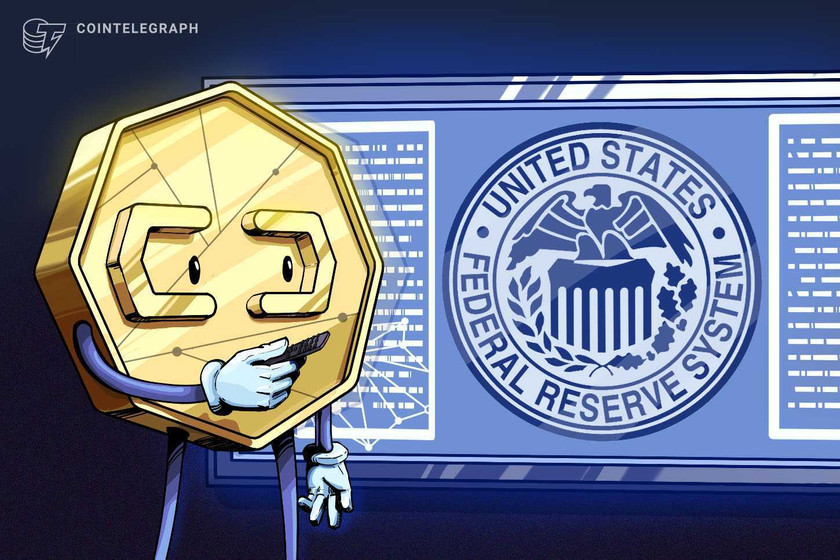It’s been close to 10 years since Bitcoin came into existence, and in that time, major financial institutions have slowly come to grips with blockchain technology and cryptocurrencies.
Some have taken to the industry quicker than others, and some have outright turned their backs on the thought of using or investing in cryptocurrencies.
However, the technology underpinning these decentralized digital currencies has been a major focal point, mainly in terms of how it can be used by traditional banking and financial institutions.
A number of big name financial companies have actively developed blockchain-based systems used for different operations. JPMorgan’s Quorum platform runs on the Ethereum blockchain and allows enterprises to process private transactions within a select group of participants.
While that project has garnered plenty of attention from mainstream media, the applications of distributed ledger technology stretches across multiple industries. Thus Morgan Stanley has leveraged blockchain technology to process transactions and backup internal data. The benefits of the technology have also been used by global auditing firms like PwC, Deloitte and KPMG.
In August, the World Bank announced that it was launching the first-ever blockchain-based bond, through the Commonwealth Bank of Australia (CBA). The project is called ‘Bondi’ (Blockchain Operated New Debt Instrument), which could also refer to the world-renowned Bondi Beach in Sydney.
The bond has now been officially issued and the $73 million deal sees two-year contracts that will settle on Aug. 28. The CBA says the deal will yield a 2.2 percent return.
The move is the latest and most significant by a global banking company, as it marks a shift toward the use and understanding of the possibilities of blockchain systems.
In an exclusive interview with Cointelegraph, the World Bank’s Paul Snaith, who is head of treasury operations, capital markets banking and payments, gave an inside look at the path taken to leverage blockchain technology at the institution, as well as the World Bank’s thoughts on cryptocurrencies:
Why blockchain, why Commonwealth Bank of Australia?
Cointelegraph: How long has this blockchain-based bond has been in development and why the Commonwealth Bank of Australia in particular was chosen to develop this platform?
Paul Snaith: We began considering that in August 2017, and after a while, we established the formal arrangement with CBA in January 2018.
There are three areas that are significant. On the first level, there is a very positive environment nurturing blockchain fintech. We think all levels of the Australian government are interested in all these technologies, and we think the regulators there are interested in what’s going on.
I think the example we used is that Australia’s stock exchange chose individual asset holdings to replace their equity settlement system in 2016. In a significant market like Australia, the equity settlement system and major market infrastructure is a powerful indication of understanding the benefits of the technology and governmental support — that’s at the governmental regulatory level.
CBA, they are innovative. We’ve worked with them for a very long time. We were aware of their prototype transactions, which they’ve been doing since January 2017. <...> We are aware that they’ve got a significant corporate commitment to innovation and that they understand this kind of technology is both a threat and opportunity in every line of business that they have. That’s why they have the innovation lab in Hong Kong, one in Sydney and one in London. We recognize them as innovative.
Lastly, the market: The World Bank has been issuing debt in Australia for a long time. We’ve been reactive to the Australian market and investors are familiar with our name. It’s a very convenient place for us to do business. Whether at the regulatory level, the innovation level or the market level where our name is used, it’s positive all round.
Cointelegraph: Was there any other country that you might have considered or any other field that you might have considered in order to move this project forward?
PS: We had quite a few preliminary conversations with various technology firms in the second half of 2017, but none quite resonated in the complete sense that I’ve given you for Australia. We use the term ‘contained’ — its the most contained-based market with positive views in regard to our partner, with innovation and regulation.
World Bank and cryptocurrencies
PS: The bank is considering developing an official line in that regard, and we do not have one at this time. But within that context, we have been having internal conversations about that.
The key thing is with cryptocurrencies that are using proof-of-work, and therefore considerable power and energy use in establishing consensus — we are primarily a development agency and we care deeply about development issues — including carbon dioxide emissions and power generation, which contributes to global warming, and so on.
We’re a little discomforted by the power usage associated with proof-of-work, for example. We are an official organization owned by over 190 countries, so AML and CFTC rules are very important for us, and there are still concerns about AML and CFTC with the use of crypto. And we think it’s important that we don’t associate with that until we have a clear framework to do so. Those are some of the reasons why we would not do that at the moment.
We did look at using a crypto token for the settlement on this bond transaction — but chose not to — primarily to de-risk the transaction a little bit to enable familiarity for all our investors with regard to the cash side of the transactions.
Getting investors to come into a significantly large transaction like this means us giving them comfort. They are certainly comforted by our name: We operate in a massive market and we are AAA rated. But there’s new technology underpinning it, so it’s important that we de-risk the transaction on the cash settlement portion.
We are very, very interested in how that side of the equation will develop and we will continue looking at that. We have no generic opposition to what I have described. We grouped these technologies both on the transfer of securities on a register and the exchange of ownership of the cash piece, so both of those problems are going to be solved in the long run, which will reform these markets and make them so much faster.
Blockchain-based bonds and the banking sector
PS: We are a big name in this market and we hope it’s going to catch attention. I think you are already aware of large players in international markets that are already doing some activities and exploration. We mentioned Australia’s stock exchange, which is fundamental — we have not seen big infrastructure projects in other areas yet, but there’s a lot of research being done in places like Singapore, Canada and elsewhere. We hope this is going to give a nudge in that direction.
Lastly, we are primarily a development organization. This transaction really helps us learn. We’ve always been innovative in the capital markets. We hope to deepen our understanding of the impact of this technology in the capital markets, and we certainly look forward to doing exploration with regard to other means of moving value. We think there is considerable promise for these technologies to help that part of the world which is presently unbanked or has little access to financial services.
We’ve got a deep interest in seeing how these technologies can be applied for the benefit of the poorest in the world, and that’s a major focus as an institution.
This interview has been edited and condensed.








